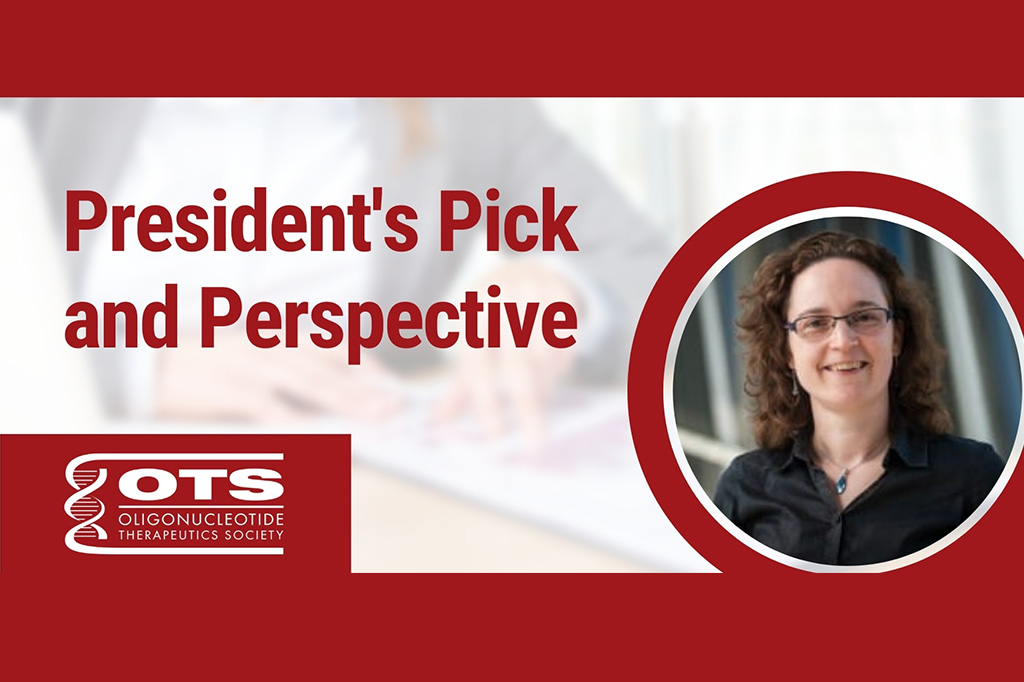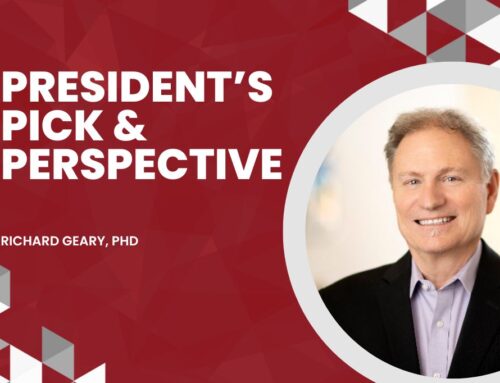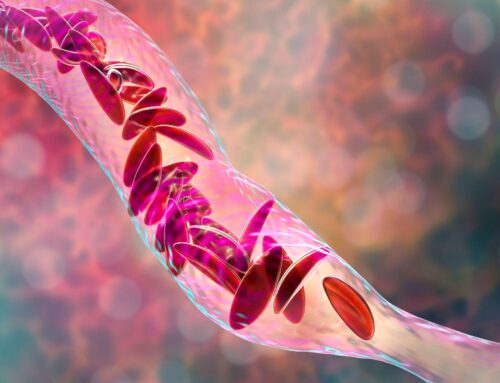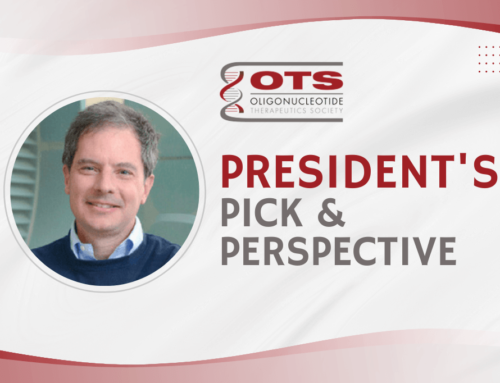Looking for something?
President’s Pick of Presentations from the Annual OTS Meeting

By: Annemieke Aartsma-Rus, Ph.D.
The second virtual annual meeting of the Oligonucleotide Therapeutics Society (OTS) took place September 26-29 on a computer or laptop near you. Despite the challenges the pandemic poses on research and development in general, the oligonucleotide therapy field has made many advances, including the first systemic trial for genome editing and the delivery of 2 mRNA vaccines for SARS-Cov2. The presentation about the clinical development of the Moderna SARS-Cov2 vaccine by Randy Hyer (Moderna) in the clinical trial session chaired by Martin Maier (Alnylam) and Richard Geary (Ionis Pharmaceuticals) was an interesting experience. It reminded me of watching a movie after you have already read the book. You know how the story ends, but hearing the details and considerations of the development added to the experience, as did the fact that a compound was discussed that I have personally been injected with. Probably others were also doing the mental checkbox as Randy was listing the side effects.
Like last year, the meeting consisted of sessions with invited speakers and on-demand shorter talks that one could watch at their leisure before or after the meeting. Furthermore, there were over 100 posters with 3 minute short oral summaries provided by the presenters. (This is something I hope we can keep for in-person meetings – it prevents presenters from having to give the same 3-minute summary multiple times per poster session and allows more time for discussion).
Day one (or technically minus one) featured a pre-conference educational session on the basics aimed at those who are new to the field. Even for someone like myself who has been in the field for a while, this session was enlightening. The oligonucleotide therapy field is moving fast, but this is facilitated by preparation work done by others over the last decades. This truth was also highlighted in the Letsinger symposium, in honor of the 100th birth year of Dr. Bob Letsinger (1921-2014). In a time where we can order oligonucleotides with endless chemical modifications in gram and kilogram scale, it is good to remember that in the last century it was an achievement to produce dinucleotides at milligram scale. Without breakthrough groundwork from people like Bob Letsinger, we would not be where we are now.
The meeting was jampacked with interesting talks and each session was as good as the next. It is impossible to highlight everything interesting in this blog. I will briefly mention two additional personal highlights. The first was a talk from Elizabeth Berry-Kravis (Rush University Medical Center, Chicago) in the session on rare diseases and the role of patient advocates, chaired by Tim Yu (Boston’s Children Hospital, Boston). Elizabeth presented on the development of outcome measures to assess the therapeutic effects of oligonucleotide treatment on patients with Angelman Syndrome. I really appreciated the way patients and families were actively involved in the selection and design of outcome measures. It makes perfect sense to ask the patients and families what is clinically relevant, as they live with the disease. Instead, so often in clinical trials, clinically relevant means what the clinician thinks the patients will find relevant.
The second highlight was of a more fundamental science nature: the talk by Charlie Gersbach (Duke University) on epigenome editing in the genome editing session chaired by Keith Gagnon (Southern Illinois University, Carbondale). Where most people use cas9 to edit genes, Charlie’s team has adapted cas9 to make epigenetic changes. This can be used to influence the expression of one or more coding or non-coding genes, allowing studies of basic cell functioning and cell fate. The talk was a very good illustration of how basic and translational science go hand in hand in OTS.
This meeting was organized by our trainee board members and they did a terrific job, not just highlighting everything the field has to offer, but also giving a platform to our junior members. It is good to note that you can (re)watch the talks and posters until December 29th. If you missed the meeting entirely, you can also still register and have access to everything.
Last year I was convinced that the virtual meeting would be a one-time thing. I am more cautious this year, but I hope to welcome you all to the annual OTS meeting that is planned to be held in October 2022 in Montreal, so we can celebrate our 20th anniversary as a society in person.








